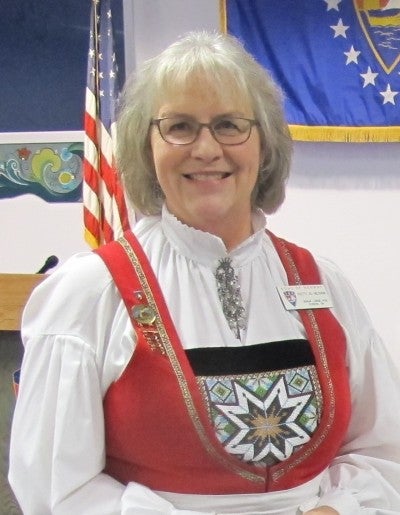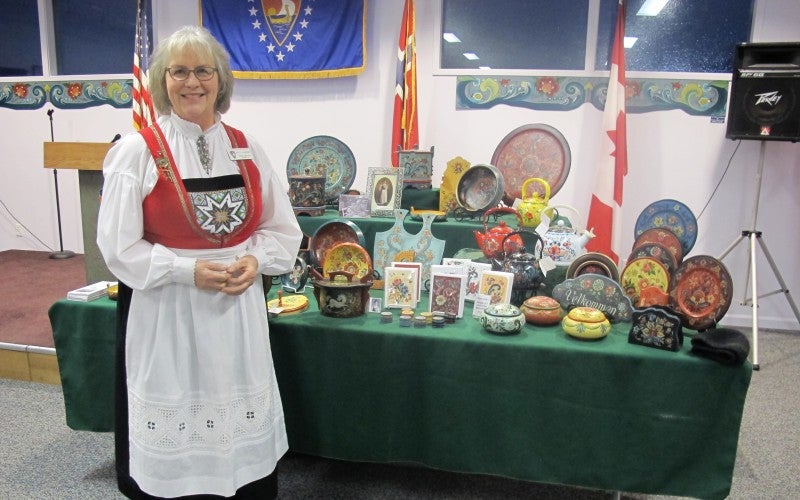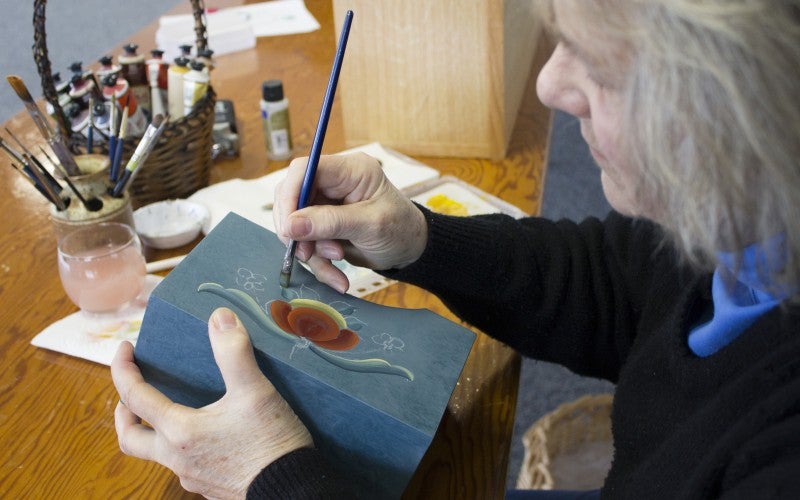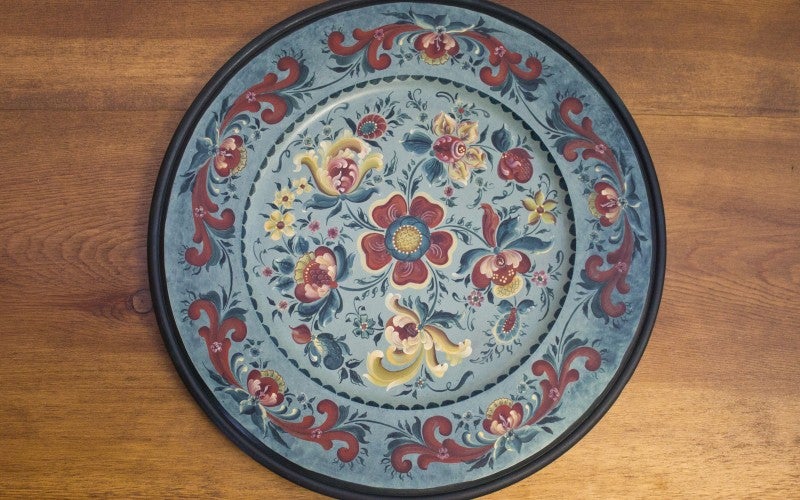Patti Jo Meshnik (Eugene) is a traditional Norwegian Rosemåler. Rosemåling is the decorative art of painting objects with stylized flower and scroll motifs. Meshnik's original patterns are created after study of Rosemåling from the rural areas of Norway. With a focus on balance, brightness, and depth of color, Meshnik's work is done mostly on wooden pieces such as boxes, plates, bowls, Christmas ornaments and sleds, while her more unusual pieces include enamel tea kettles and skate boards. The passion to follow her Norwegian heritage led to her involvement with Eugene’s Sons of Norway Sonja Lodge, where she was elected president in 2018.
Bio
Meshnik’s grandparents immigrated in the early 1900s to the United States from Bømlo, a small island off of Norway’s west coast. Rosemåling began in the 1700's as the decorative folk art of painting with stylized flower and scroll motifs. The traditional designs focus on balance, detail, and depth of color while remaining true to the region of Norway where they originated. In their new home of Lewistown, Montana, her parents were charter members of a Sons of Norway lodge. In 1980, at her mother’s suggestion, Patti Jo took her first rosemåling class. She continues to study with master rosemålers to learn the nuances of the many different styles of this folk art. These regional styles developed due to the separation between the deep Norwegian valleys, where traveling artists would often stay with a family all winter, brightening up household items and soot-covered furniture. Meshnik tends to use acrylic paints and brushes of various sizes: flat brushes, filbert brushes (flat with a rounded tip), and fine quill-like liner brushes. The quill brushes produce the intricate details and lines that characterize rosemåling. Meshnik begins at the center or root of a piece and uses S and C strokework, adding color, shading for depth, and then fine detail lines. She lets the work speak to her and evolve as she paints, always bringing the strokes back to the root. She is especially careful to avoid the temptation to overfill negative space. The balance of color and design elements combined with her use of the correct regional style for an object shows her artistic mastery in her ability to create authentic Folk Art that remains true to its Norwegian roots. Meshnik notes, "Folk art is a hard thing to keep alive in modern days, you need to find someone who wants to teach, and someone who wants to learn.”





